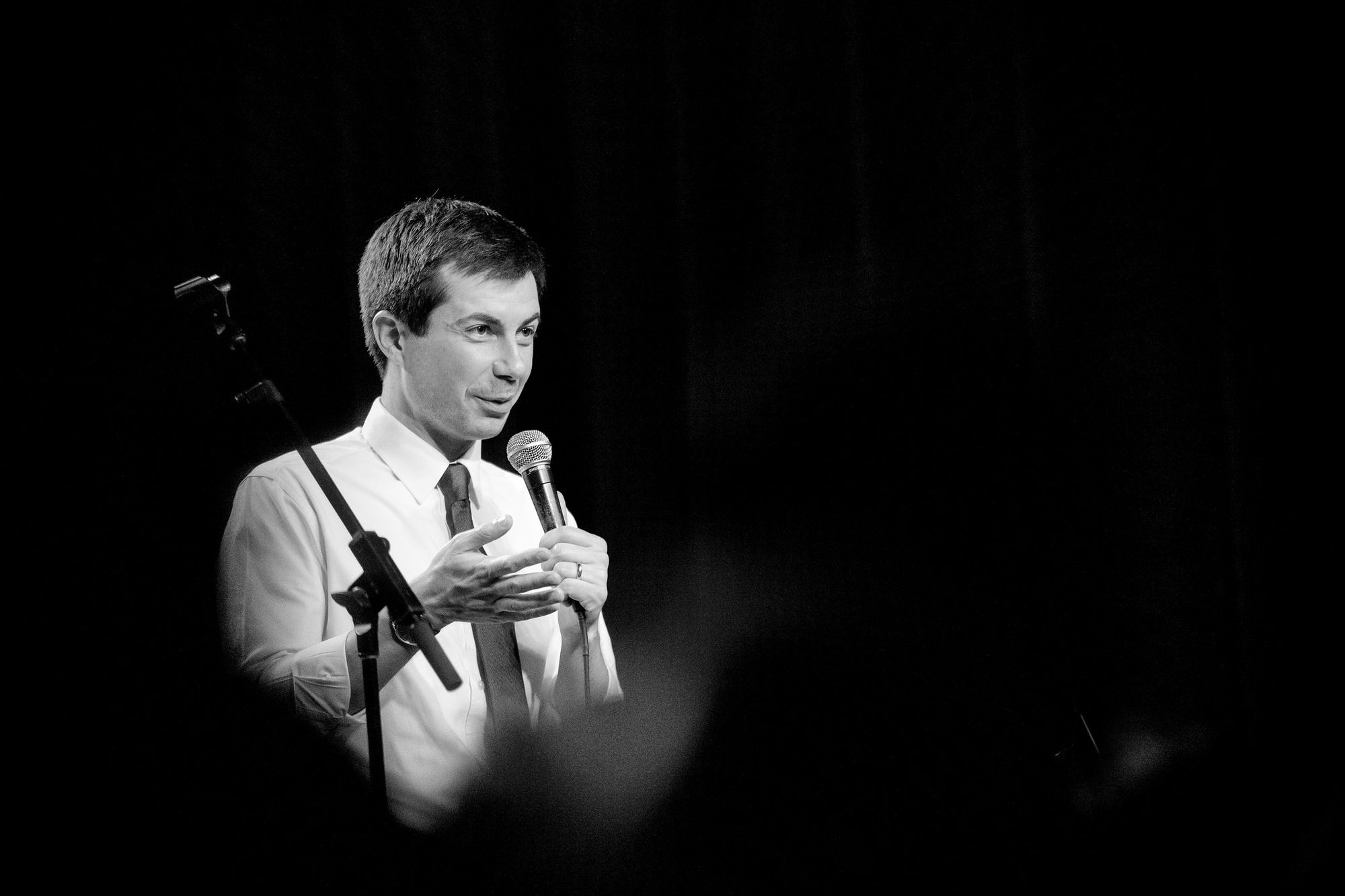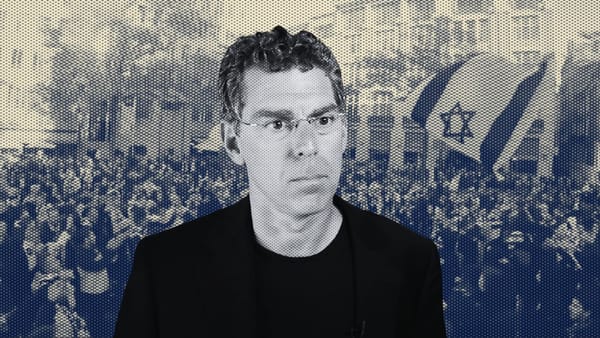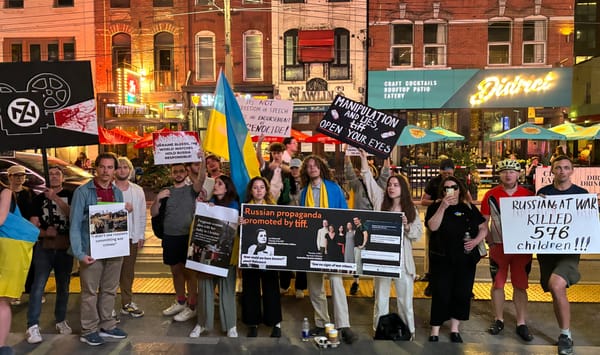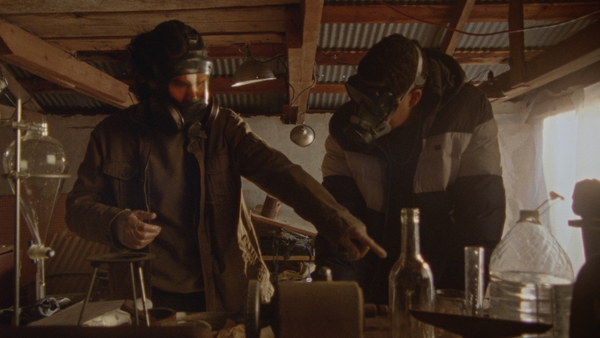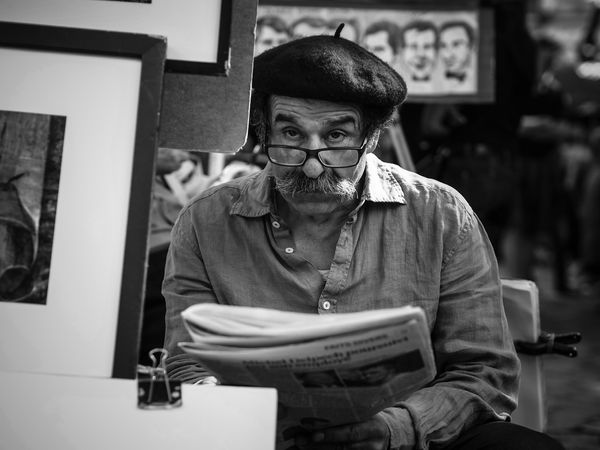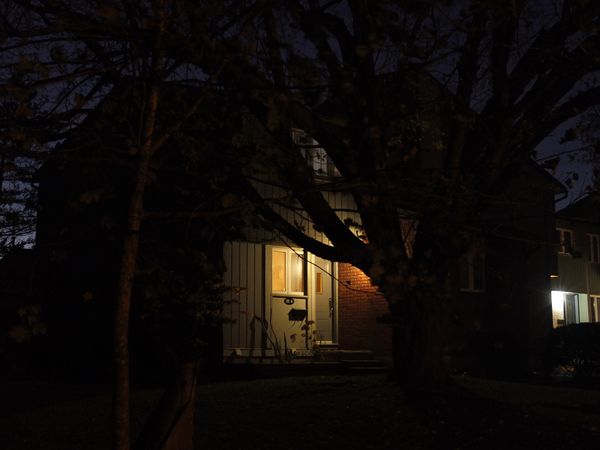In December, I watched a lot of new, gay Christmas movies. Perhaps it’s the conservative nature of the genre, but I was struck by how decidedly un-queer they were.
Single All The Way on Netflix features a man falling for his roommate in an extended TaskRabbit commercial. Lifetime’s first lesbian offering, Under The Christmas Tree, is so family-friendly that a rogue joke about strap-ons feels jarringly out of place. Christmas At The Ranch, created by lesbian-helmed Tello Films, features no queer characters beyond the completely frisson-free leading ladies. Yes, 2021 gave us more homosexual holiday movies than we’d ever seen before, but none of them were, you know, queer. These felt ‘gay as in happy,’ not ‘queer as in fuck you.’
This is part of a broader trend in how 2SLGBTQ+ stories are displayed on-screen: Queer, trans and gender-diverse characters have gone from being punching bags, to stereotypes, to trailblazers, to just like everyone else. Middle-class characters populate the majority of TV shows, but now some of them are monogamous queer parents or non-binary teens.
The issue here isn’t that characters have stopped being called dykes or weirdos; it’s that they’re being written with the same references as straight, cis characters. And queers who aren’t just slightly-modified-straights are tasked with being ambassadors of the community, packaged in a way to appeal to straight audiences.
While the reasons for watered-down 2SLGBTQ+ content are varied and hard to quantify, I have a couple of theories. The first is queer assimilation. Now that some civil rights battles have been won, wealthy 2SLGBTQ+ people (including showrunners and those in positions of creative power) are happy to integrate into society instead of pushing for a radical alternative. The second theory is that overt queerness is unmarketable amid the increasingly sexless media landscape.
Joining The System, Or Changing It?
Since 2005, GLAAD has published an annual “Where We Are on TV” survey tracking the number of “LGBTQ regular and recurring characters” on original, scripted cable and streaming shows. The report for 2020 found that the number of LGBTQ characters had dipped since 2019. The non-profit previously set a “challenge” for 50 per cent of LGBTQ characters to be racialized, and the report also noted that this had been achieved by “primetime scripted cable” and “broadcast” platforms, and that streaming was at 46 per cent. (GLAAD doesn’t specifically track Two-Spirit characters.)
The survey notes the low numbers of asexual, disabled or HIV+ queer characters on television, but doesn’t provide deep analysis. (All of the HIV+ characters are on a single show, Pose, which concluded last year. The show also featured a huge number of racialized queer and trans characters.) How many of these queer characters are middle-class? How many are parents, married or the sole 2SLGBTQ+ character on their shows?
Analysts sometimes use the “sexy lamp” test on characters that are women, asking, “Would the story change much if she is replaced by a sexy lamp?” Perhaps there should be a “straight lamp” analogue: How much does this character’s story change if they were cishet instead? What roots them in queer community and culture beyond their orientation or gender? These questions should be considered as part of a broader debate between queer assimilation and queer liberation.
Queer assimilation advocates for finding a place within existing society. But society is still largely straight and cisgender, so assimilation means being stuck in the confines of fundamentally oppressive norms. Queer liberation, meanwhile, asks whether things such as the nuclear family, corporate jobs and incremental reforms are the best we can hope for, or whether we should strive for societies not built on patriarchal, heteronormative, capitalist structures.
Queer assimilation isn’t a new phenomenon. It is often pushed by middle-class, cisgender, gay men (the Pete Buttigiegs of the world) and has long been critiqued. In 2008, an anthology of anti-assimilation essays was published, titled, That’s Revolting!: Queer Strategies For Resisting Assimilation. In 2001, Duke University Press published a book with a chapter by academic Lisa Duggan dissecting homonormativity and neoliberalism. Trans women debated in ’90s zines if they should change to satisfy people who’d never see them as human. And, in the ’50s, the Mattachine Society was founded by communists, who argued against assimilationist views.
An almost annual example of this discourse is the “kink at Pride” debate. In short, internet denizens argued over how horny 2SLGBTQ+ people should be allowed to be at events that ostensibly celebrate the community but have increasingly become a battleground of performative corporate wokeness. The suggestion some community members make is that queer and trans sexualities aren’t appropriate for public spaces because they may offend straight people or cause their children to ask difficult questions. This group recognizes that straight people still have power over marginalized genders and sexualities, but argue for acquiescence to these oppressive norms rather than liberation from them.
This has manifested in the media as well. Some of the most popular queer television shows aren’t scripted content, but reality TV. The reboot of Queer Eye features four young-ish, gay men, and one enby, improving the lives of random everyday “heroes.” While the original ’00s series almost exclusively featured straight men, the current iteration has a range of main characters: surly farmers and aging truckers, but also young gays, overworked women, and a couple of trans 20-somethings. The episodes featuring 2SLGBTQ+ people are often the most heartfelt and applauded, and yet we only get one per season, which is about as often as they do something batshit, like remodelling a fire hall or throwing a prom.
In a season six episode, non-binary beauty expert Jonathan Van Ness explains to Texas cattle rancher Josh what they/them pronouns are, and smiles gamely as he mumbles something about being “polite.” He mentions being Van Ness’ first “Republican friend,” and Van Ness laughs instead of explaining that many queer people don’t want to be friends with those who vote for groups that openly attack our rights.
Is this Van Ness’ fault, for not making the point, or production’s fault for creating an environment where they know they can’t say that? I lean toward the latter. While the Fab Five have signed up for the show, it’s still production who decides to push friendship-across-political-divide narratives. Whether those producers are members of the 2SLGBTQ+ community isn’t relevant: they are pushing for status quo straight comfort, regardless. Van Ness can’t tell a bigot to fuck off when it’s their job to balayage his hair.
Over on VH1, RuPaul’s Drag Race continues its march from gay competition show parody to played-straight reality show. Season 14 introduced its first straight, cisgender contestant, who has so far been treated with the kind of self-congratulatory reverence that also greeted the show’s first trans man (on season 13) or cisgender woman (on Drag Race UK season two). Gone are the days of season two queen Nicole Paige Brooks declaring disagreements “malicious, just gay faggotry.” Here, instead, are queens gathered around mirrors discussing deep traumas in a way that will educate a straight audience and act as Emmy bait.
Drag Race is also an odd beast, in that its production company is helmed by two cisgender gay men, and RuPaul is an executive producer. When we consider who is calling the shots — who has charted this course from for-the-gays camp competition to for-the-straights fashion show — at least three queers (from rebellious, club kid roots) signed off on this. At some point, they decided they wanted to move from fringe to mainstream.
Other shows have popped up to fill the queer drag competition niche — Camp Wannakiki and Boulet Brothers’ Dragula, for instance — but Drag Race remains the best known, the widest watched and the most accessible for a straight audience.
We also can’t be too critical of the choices queer creators have to make in order to succeed. Many creators can’t get their queer-as-in-fuck-you projects backed. Radical characters get watered down, or only presented in defanged ways, because of the number of people in power who have to sign off on it. Queer creators might be creating assimilationist content, but there are power structures in place that breed it.
More Action, Less Sex
Modern media has also seen a strange resurgence in sexual repression. Raquel S. Benedict, writing in Blood Knife last year, described how mainstream action movies “fetishize the body, even as they desexualize it.” People with impossibly ripped physiques no longer have sex, or even really seem to think about getting down and dirty.
This dearth of big screen sex mirrors the way queer characters are increasingly desexualized in media. There are a few different factors to consider in the rise of unhorny heroes: young people’s changing attitudes to sex, social media moderation, puritanical payment processors and media conglomerates wanting to make their content as globally palatable as possible.
Zoomers, while being more sex positive and openly queer than previous generations, are also having less sex. Sex therapy student Tatyannah King told BuzzFeed that life milestones such as “dating, moving out of your parents’ house, cohabitating with a partner, or getting married” are delayed for Gen Z, which the pandemic has no doubt compounded. A few so-called “puriteens” form a vocal minority in loudly decrying anything explicitly sexy online. These are often the same teens who argue for assimilation, as anything overtly queer is likely sexual, and thus could upset our straight gatekeepers.
The online spaces where young people hang out are also pretty anti-sex. Tumblr infamously banned “adult content” in 2018, leading to endless jokes about “female-presenting nipples.” More recently, Tumblr broadened tags it won’t show on iOS apps in order to avoid being banned from the Apple Store — meaning a tech company valued at $3 trillion earlier this year is pushing its anti-sex agenda onto websites. TikTok community guidelines also ban sexual content, which is disproportionately wielded against sex educators and 2SLGBTQ+ creators.
Balancing community protection with freedom of expression often ends up allowing violent content while banning anything remotely sexual, mirroring North America’s strange taboo around being honestly horny.
It’s not just media and online platforms facing desexualization: explicit content is being made harder to create and purchase in adult spaces, due to payment processors not wanting to be involved. When OnlyFans tried to ban porn, the reason given was “banks.” The institutions controlling our money — who invest in war and fossil fuels — apparently want to draw the line at “adult content.” Mastercard has adult content rules, American Express won’t process any kind of payments for explicit content and PayPal has unclear policies that effectively ban most sex-related transactions.
While porn is as easy to find and consume as ever, paying for it is getting harder. Anti-porn religious organizations such as Exodus Cry and the National Center on Sexual Exploitation have led the push for stricter adult content payment rules. This adds to the anti-sex digital landscape, as companies are reluctant to host content that can’t be easily bought.
Finally, there’s the problem of international distribution of major content. Some large global markets — such as China, Russia and Saudi Arabia — often censor queer moments or outright ban sexual content. When profit is the primary motive, major film and television studios aren’t incentivized to create anything uncomfortable or unmarketable. There’s a reason Disney is mocked every time they announce their “first gay character”: it’s often a bit part, irrelevant to the plot and never expanded upon, in order to be easy to remove from international cuts of the movie.
Taken together, this creates an atmosphere where any 2SLGBTQ+ content can be seen as sexually explicit, and thus censored, meaning only the most anodyne, desexualized representations are acceptable. Queerness moves from counter-cultural weirdness to palatable quirkiness. There are more trans and gay characters, but they’re deliberately not ruffling any feathers.
So, here we are in 2022. Our queer characters on screen represent a small section of 2SLGBTQ+ experiences, and are packaged as diverse, progressive, or subversive merely for their identities, without considering how it shapes their lives.
It certainly feels like an assimilationist victory, as some of the biggest shows in the world now centre queer characters or people. It’s also a win for representation politics, where, as Alex V Green noted in a 2019 Xtra article, “Transactional relationships between brands and individual LGBTQ2 people are accepted as a form of activism without any accompanying commitment to the causes that directly affect the most vulnerable members of our communities.”
Never mind that corporate interests decide what 2SLGBTQ+ people to support in the first place. Never mind that individual success under capitalism doesn’t equate to system-wide liberation. Never mind that more white, married gays on TV does nothing to help disabled trans people, Black queer sex workers or homeless HIV+ positive teens. The 2SLBTQ+ community has been noticed, and we are expected to rally around our few successful celebrities without questioning the stories showrunners don’t deign to tell.
When representations of a wildly diverse group of people in real life get reduced to “ suburban parents” or “side character,” we lose the stories of singles hooking up in parks and anti-capitalist polycules and trans people tenderly loving one another, the found families we form and fracture, the communal history that continues to backdrop our existence, and the ever-evolving ways we find to love and fuck and live in a society that would still rather we didn’t.
In a 2015 paper, academic Colin P. Ashley argues that queer assimilation became the standard in the United States as the complex web of 2SLGBTQ+ political battles was flattened into advocating for equal marriage. But Ashley notes that this, too, is not recent, as while the founders of the Mattachine Society were Marxists, during the ’50s the radical elements were sanded off. Ashley writes, “The values of collective liberation shifted to a reforming model that also brought with it a new push for gay passivity. Instead of fostering a critique of a larger oppressive society, the new leadership promoted the belief that homosexuals should behave in a way, ‘that is acceptable to society in general.’”
In other words, privileged parts of the queer and trans community have always moved in ways that are most profitable for them, and tried to turn what should be a broad, collective struggle into plays for personal gain.
As there continue to be more 2SLGBTQ+ stories, characters and creators, perhaps we will see an increasing number of big-name networks willing to deal with messy, strange stories. CBC’s Sort Of broke boundaries with its working-class, South Asian, non-binary lead character. Ryan Murphy helmed Pose, using his clout as a cis, white, gay man to give room to queer and trans racialized people. Euphoria is praised for its depiction of all kinds of teens, including a trans girl as a romantic lead who is truly loved rather than fetishized. But these depictions are few and far between.
Liberation is more than making steps in the right direction. Our struggles go beyond the narrow window of representation politics. But all the same, it would be nice to see our myriad of stories reflected back.


